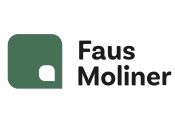New features of the Catalan guide on the advertising of medicinal products for human use
Approval of the new update to the Guide on the advertising of medicinal products for human use by the Generalitat of Catalonia
CAPSULAS Nº 169
Background
The Guide on the advertising of medicinal products for human use by the Generalitat of Catalonia, in addition to the Madrid Circular, and FARMAINDUSTRIA and ANEFP Codes of conduct, have played a significant role in providing legal certainty in so sensitive a field as advertising conduct. Since its first edition in 2003, the guide has maintained a practical and illustrative approach that is much appreciated given its clarity. A pioneer in addressing the blurred line between “advertising” and “non-promotional information”, the latest version published in January 2016 also maintains a high level of consistency in terms of the standards of conduct that have been established via the industry’s self-regulation system; this was undoubtedly a wise move in terms of generating synergies that will enhance responsible communication. Below, you can find a summary of the new features of the fourth edition of the guide.
Information vs. Advertising
Although it did not feature significantly in past editions, one of the most useful sections continues to be the one on the criteria for distinguishing advertising and promotion from legitimate informational activities that do not serve a promotional purpose and are therefore not subject to the rules and duties corresponding to the advertising of medicinal products.
It clarifies, amongst other issues, that it is legitimate to distribute information published on the special uses of medicinal products (i.e. in unauthorised indications/circumstances) whenever the dissemination of said information is not linked to any element of a promotional nature. Wisely, it also updates the references to purely informational material aimed at patients and other healthcare professionals such as nurses, whilst maintaining a clearly obsolete criterion regarding catalogues and price lists. In this respect, the guide bans information other than the name and price of products from appearing in catalogues and price lists. European case law, on the other hand, suggests that documents and information approved by the authorities (Summary of Product Characteristics-SmPC, labels, etc.) should not be considered elements of publicity, provided that they are made available to the user in an appropriate manner and subject to certain conditions; therefore, their inclusion in catalogues and price lists could hardly be considered illicit.
New communication obligations
As for administrative obligations stemming from promotional activities, for the first time, regional authorities must be informed regarding informational material designed for professionals and patients as set out by the European Medicines Agency as part of the risk prevention plan. The guide also imposes the obligation to provide advance notice about the sponsors of events at which twenty or more healthcare professionals will assist.
A number of the new obligations do not appear to be founded in a solid and evident legal basis (nothing is mentioned in that regard in the Royal Decree of 1994); as a result, it is impossible to rule out potential disagreements regarding the relevance and scope of the new obligations.
Documentary advertising
For the first time, the guide expressly introduces the obligation that promotional material must clearly state the indications of the medicinal product financed with public funds and those not financed with such means. Also, at international conferences held in Spain, information must be provided as to whether the SmPC contain differences compared with the ones authorised for use in Spain.
As is the case of the Farmaindustria Code, the guide allows the use of promotional slogans, free from technical content, provided that they are not misleading in terms of the product’s properties. It also features similar criteria concerning the use of sources, making it mandatory to cite them exactly; however, unlike the Code, it allows for scientific texts to be provided in image form, or another type of illustration that preserves the original meaning and that is not misleading. Furthermore, the guide introduces the rule of citing bibliographic references pursuant to Vancouver standards. Last but by no means least, it removes the option of relying on “data on file” or internal company information as the source of an advertising assertion.
Internet and social networks
The guide reminds readers that rules on advertising medicinal products apply to all advertising information and material, regardless of the media used to disseminate said information or material. In other words, materials and initiatives disseminated online, via social networks and/or new electronic devices are subject to the very same rules as materials and information disseminated by traditional means of communication. In this respect, the guide obliges companies to provide its staff with appropriate training on these rules in addition to underlining their responsibility in terms of the content of links on the company website and insisting on the criterion, already in place, that the URL address of the company’s website cannot include brands or names of medicinal products.
Furthermore, in consideration of the new possibilities offered by technology, the guide relaxes the principle that essential information must be included in advertising itself or immediately afterwards, although it insists that readers must not be provided with said essential information by means of a URL address or using a QR code printed on the material.
Gifts and hospitality
Similar criteria as those set out by the Farmaindustria Code in the past are adopted. Therefore, a maximum amount of 10 EUR has been set as the figure considered negligible for a gift. Due to the likelihood of confusion, the guide also prohibits that said gifts are presented in packaging similar to the one used for medicinal products, including the use of images on their labels. Finally, it asserts that the contribution of companies to awards, grants and subsidies, whenever the beneficiary is a healthcare professional, must be destined to exclusively professional or scientific activities.
